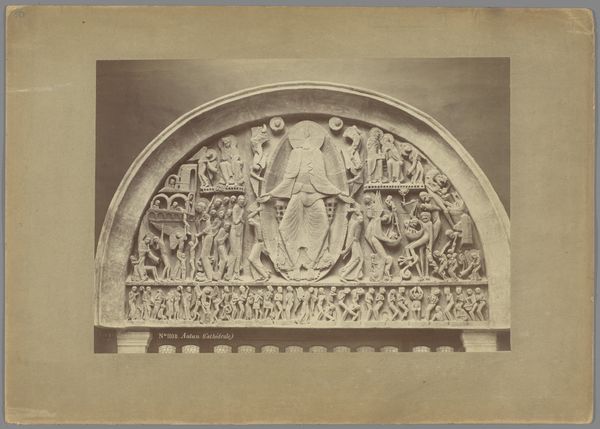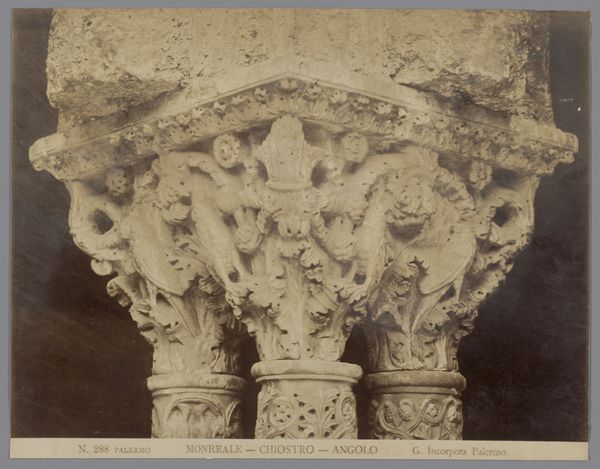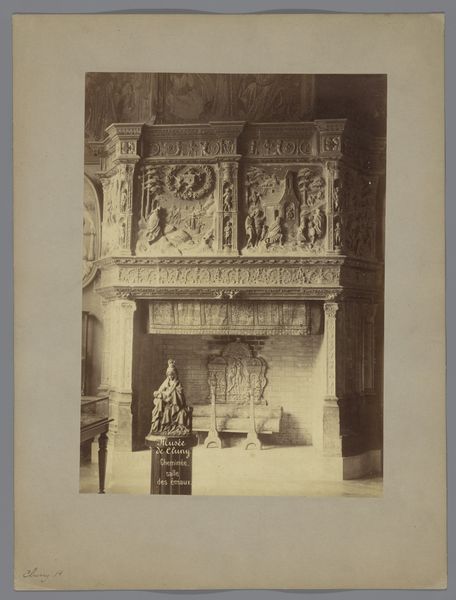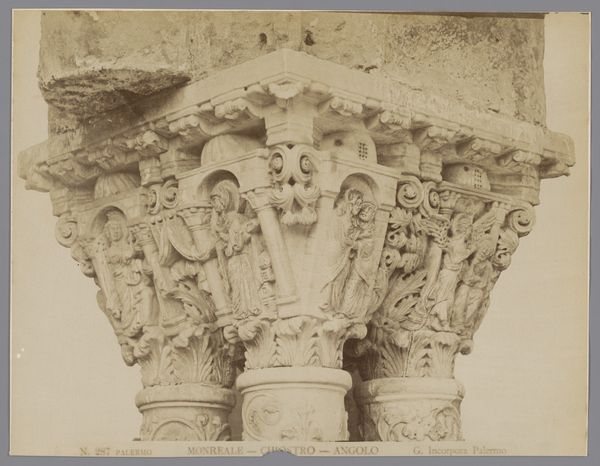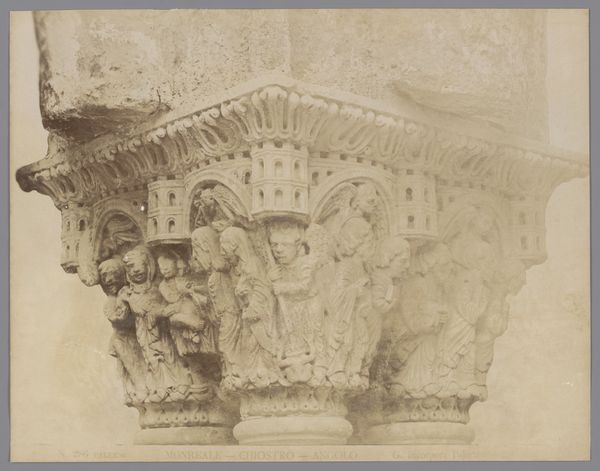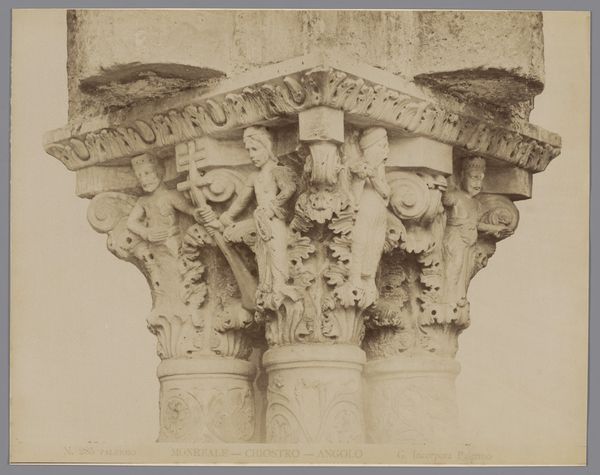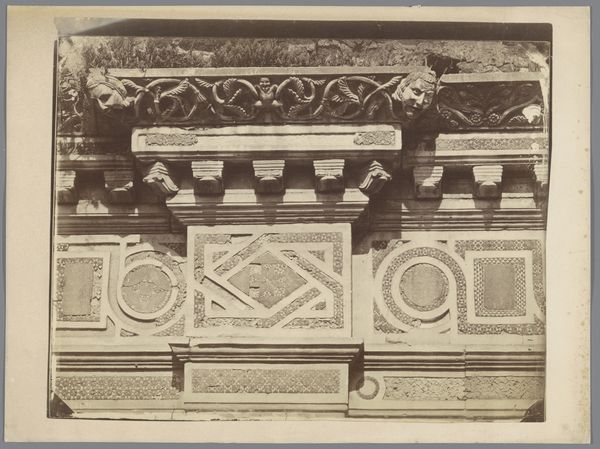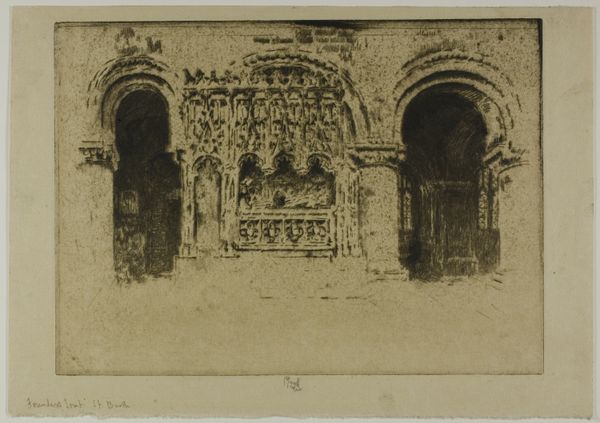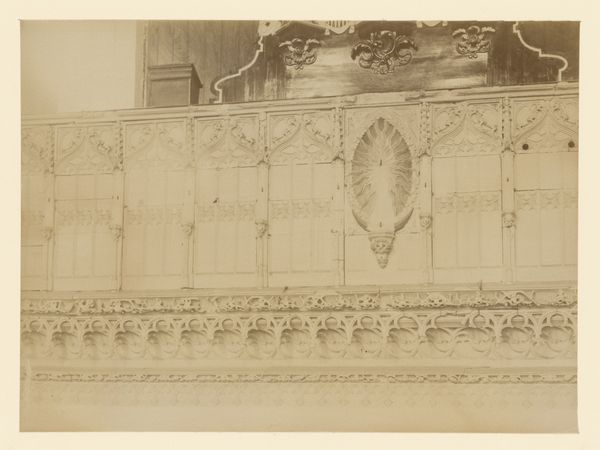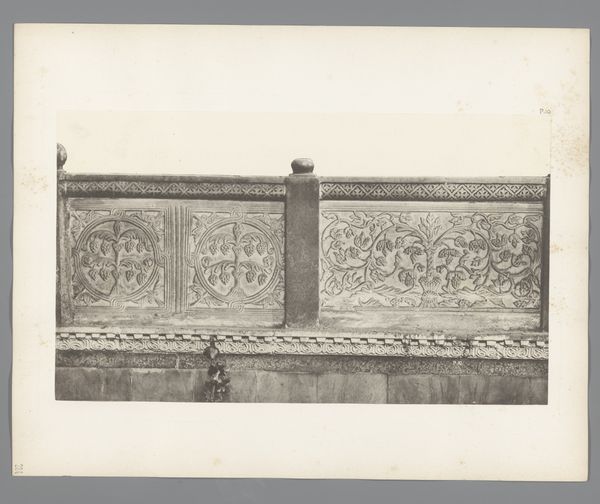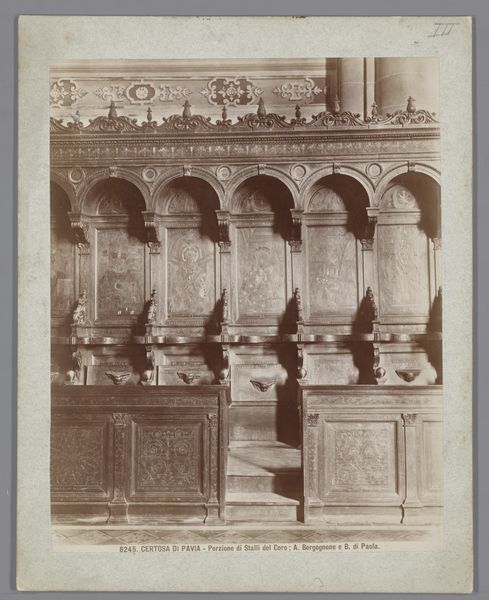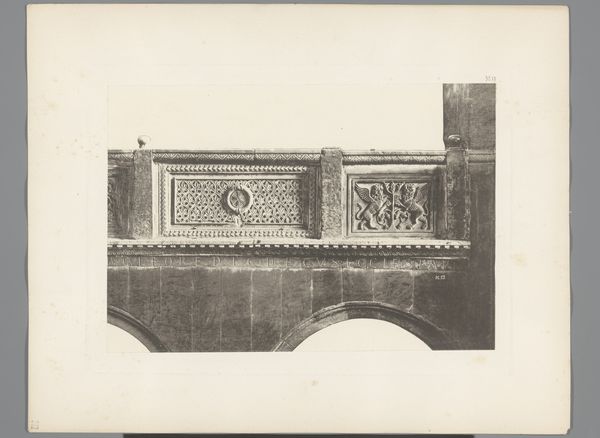
relief, photography, sculpture
#
sculpture
#
relief
#
photography
#
romanesque
#
sculpture
#
watercolor
#
statue
Dimensions: height 205 mm, width 261 mm
Copyright: Rijks Museum: Open Domain
Curator: This intriguing image captures the tympanum of the Abbey of Charlieu, and was produced by Adolphe Giraudon, likely between 1875 and 1900. It seems to be a photographic print, likely intended to document the Romanesque sculpture. Editor: Immediately, I'm struck by the intricate detail despite the limited tonal range. It evokes a sense of reverence and, dare I say, also exclusion—this weighty, inaccessible space of religious authority. Curator: That sense of exclusion resonates. Romanesque art often served as a visual language for the elite, reinforcing hierarchies. The placement of figures, their size, the architectural framework all contributed to a message about power. How do you read the imagery itself? Editor: Well, at the top, the sculpture feels alive with gesturing figures—an enthroned central figure perhaps? Below that frieze, you have the smaller, more uniform figures; almost anonymous supplicants lining the entrance. I wonder what the cultural significance of the tympanum being in this photographic reproduction suggests. Does its photographic preservation further mythologize its spiritual role, even from a secular point of view? Curator: That's a compelling point about mythologizing! And indeed, the central figure in the tympanum is Christ in Majesty, a common motif in Romanesque art, symbolizing divine authority. The figures around him are likely the Evangelists or their symbols. This imagery reinforced the Church's teachings and its connection to divine power, especially at a time when literacy was limited. But your suggestion raises an important issue about the objectification and preservation of this art; who decides what is worth representing to a later culture? Editor: Exactly. I wonder, if a contemporary artist was to engage with similar religious structures, how they would approach the inherent issues of authority and representation. Perhaps deconstructing those historical hierarchies? Curator: Precisely. The complexities in representation open the conversation about not only whose stories are privileged but also who is granted entry and agency to tell those stories. I’ll be thinking more about it! Editor: Yes, likewise. It seems the dialogue continues to ripple outwards, centuries later.
Comments
No comments
Be the first to comment and join the conversation on the ultimate creative platform.
